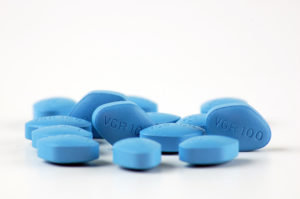Dangers of Kamagra
Short facts about Erectile dysfunction
- Erectile dysfunction affects 100 million men worldwide.
- The number of men affected by erectile dysfunction is set to double by the year 2025.
- Erectile dysfunction has a significant impact on quality of life, being a highly prevalent and untreated disease.
- Erectile dysfunction is more common among men aged 60 and older, but it can occur in men of any age.
- Erectile dysfunction affects your partner too.
- Tight clothing does not cause erectile dysfunction. For decades, there has prevailed a myth that wearing tight underwear, jeans, or other smug garments could cause erectile dysfunction.
- Some cases of erectile dysfunction are psychological.
- Erectile dysfunction can be a warning sign of impending heart disease, early death and high blood pressure.

What is Erectile dysfunction?
Erectile dysfunction represents the persistent inability to attain and maintain an erection sufficient to permit satisfactory sexual performance. Erectile dysfunction has a significant impact on the physical and psychological health of men worldwide and can also affect the quality of life of both the sufferers and their partners.
Penile erection is a complex phenomenon which involves a delicate and coordinated balance between neurological, vascular and tissue compartments. This includes arterial dilation, relaxation of the trabecular smooth muscle, and activation of the corporeal veno-occlusive mechanism.
The most common risk factors for erectile dysfunction include cardiovascular disease, hypertension, diabetes mellitus, hyperlipidaemia, hypogonadism, lower urinary tract symptoms, metabolic syndrome, depression and smoking.
Erectile dysfunction symptoms may appear to most men as transient, but in fact, the symptomatology is persistent. It can cause a lot of frustration if not treated.
Specialists in sexual medicine advise about the fact that most cases that confront with erectile dysfunction don’t realise the importance of the disease and tend to ignore it.
The mechanism of penile erection
Penile erection is a spinal reflex that is initiated by autonomic and somatic penile afferents and by supraspinal influences from visual, olfactory, and imaginary stimuli. There are several central transmitters involved in the erectile control, some of them with a facilitatory role and others with an inhibitory role.
The central transmitters with a facilitatory role in the penile erection are:
- dopamine,
- acetylcholine,
- nitric oxide (NO),
- peptides, such as oxytocin and adrenocorticotropin/α-melanocyte-stimulating hormone.
The central transmitters that inhibit the penile erection are serotonin which may be either facilitatory or inhibitory, and enkephalins which are inhibitory.
The degree of contraction of the smooth muscle cells in the corpus cavernosa is determinate by the balance between contracting and relaxant factors. Noradrenaline contracts both smooth muscle of the corpus cavernosum and penile vessels via stimulation of α1-adrenoceptors, while nitric oxide is considered the most important factor for relaxation of penile vessels and corpus cavernosum.
Nitric oxide is released during sexual stimulation. It activates the enzyme called guanylate cyclase, resulting in an increased level of cyclic guanosine monophosphate (cGMP) in the corpus cavernosum. This, in turn, results in smooth muscle relaxation, allowing increased inflow of blood into the penis. The level of cyclic guanosine monophosphate is regulated by the rate of synthesis via guanylate cyclase and by the rate of degradation via cyclic guanosine monophosphate hydrolysing phosphodiesterase (PDEs).
Which are the most common causes of Erectile dysfunction?
Problems with blood flow, nerve supply or hormones can affect normal erectile function. One of the diseases that cause blood flow problems is atherosclerosis. In patients with atherosclerosis, the arteries in the penis are narrowed and clogged, preventing the necessary blood flow to the penis to produce an erection.
The most common physical or organic causes of erectile dysfunction are:
- heart disease and narrowing of blood vessels
- diabetes
- high blood pressure
- high cholesterol
- obesity and metabolic syndrome
- Parkinson’s disease
- multiple sclerosis
- hormonal disorders including thyroid conditions and testosterone deficiency
- structural or anatomical disorder of the penis, such as Peyronie disease
- smoking, alcoholism, and substance abuse, including cocaine use
- treatments for prostate disease
- surgical complications
- injuries in the pelvic area or spinal cord
- radiation therapy to the pelvic region.
Patients who are taking medications and suffering from erectile dysfunction should consult their healthcare professional to see if any of the drugs may be a cause of the problem. These drugs include also the illicit and/or recreational drugs. Drugs and medications that cause erectile dysfunction or other sexual problems as side effects are commonly prescribed for men without them knowing the risks.
Drugs that could be involved in the occurrence of erectile dysfunction are:
- drugs to control high blood pressure
- heart medications (digoxin)
- some diuretics
- drugs that act on the central nervous system, including some sleeping pills and amphetamines
- anxiety treatments
- antidepressants (monoamine oxidase inhibitors, selective serotonin reuptake inhibitors and tricyclic antidepressants)
- opioid painkillers
- some cancer drugs, including chemotherapeutic agents
- prostate treatment drugs
- anticholinergics
- hormone drugs
- the peptic ulcer medication (cimetidine).
Treatment of Erectile dysfunction
Selective phosphodiesterase type 5 inhibitors (PDE5Is) represent the first line of treatment for erectile dysfunction These medications are highly efficacious, are well tolerated, and have very favourable safety profiles. Four phosphodiesterase type 5 inhibitors are available on market: sildenafil (Viagra®, Pfizer), vardenafil (Levitra®, Bayer), tadalafil (Cialis®, Lilly-ICOS) and avanafil (Stendra®). These agents do not directly cause penile erections but instead affect the response to sexual stimulation.
Sildenafil was the first in this series of phosphodiesterase type 5 inhibitors. According to the European guidelines the choice between a short-acting phosphodiesterase type 5 inhibitor and a long-acting phosphodiesterase type 5 inhibitor depends on the frequency of intercourse (occasional use or regular therapy, 3-4 times weekly) and the patient’s personal experience.
Other medications for erectile dysfunction include:
- Alprostadil self-injection;
- Alprostadil urethral suppository;
- Testosterone replacement.
What is Kamagra?
Kamagra is a drug used for the treatment of erectile dysfunction. Kamagra contains the active ingredient sildenafil citrate. The drug is manufactured in India and is often sold online without prescription. Kamagra is usually bought online as a cheap alternative to Viagra, Cialis, Spedra or Levitra.
However, Kamagra is currently unlicensed in the European Union. Therefore it cannot be prescribed to you by a doctor. Because of this, the exact ingredients and side effects of Kamagra are unknown, and using it is unsafe and potentially dangerous.
Getting prescription-only medicines without a doctor’s prescription is very dangerous for your health. It is very important to take prescription medicines for any condition only after you were advised by a doctor.
Although Kamagra may be allegedly very similar to Viagra, buying it from offshore websites is a huge and unnecessary risk.
How does Kamagra work?
The phosphodiesterase type 5 enzyme is responsible for regulating blood flow in the penis. When there is too much of this enzyme, the enzymes prevent the build-up of “extra” blood in the penis, which means that your erection never has a chance to build and stiffen. Sildenafil stops the activity of phosphodiesterase type 5 enzyme and increases blood flow to the penis to create a firm erection. Sildenafil and the other phosphodiesterase type 5 inhibitors are not effective without sexual stimulation. They will not give you an involuntary erection if you are not sexually stimulated.
Is Kamagra legal?
Kamagra is not currently licensed for sale in the European Union, and it is, therefore, illegal to buy or sell it.
Since Kamagra cannot legally be sold in the European Union you will be buying it from an illegal website. This means that it is impossible to know whether you are really buying Kamagra and not some counterfeit version. With many counterfeit drugs containing the wrong dosage, no active ingredient or even dangerous substances, you might end up spending money on a medication which doesn’t help you or which could even harm you.

What are the differences between Kamagra and Viagra?
Kamagra is thought to contain the same active ingredient as Viagra, sildenafil citrate. In theory, it should work in much the same way as Viagra, taking about 45 minutes to take effect, and lasting for around 4-6 hours. However, this will vary from person to person.
Because Kamagra is an unlicensed and unregulated drug, websites selling it are likely to sell fake or imitation versions, and so the exact ingredients may vary. It is therefore impossible to tell whether Kamagra will work, and the drug’s effects will vary drastically depending upon which version you buy.
Viagra is manufactured by the pharmaceutical company Pfizer. It improves the blood circulation around the body, increasing the blood flow into the penis and therefore helping men affected by erectile dysfunction to achieve and maintain an erection for sexual activity.
Kamagra is produced by Ajanta Pharma Limited, an Indian pharmaceutical company. Since this medicine is not legal in Europe, Kamagra is not guaranteed to be authentic and it is not considered to be safe for distribution. Any drugs claiming to be Kamagra could be counterfeit, poorly produced, contain a reduced concentration of the active ingredient, or contain something different altogether and dangerous to your health.
Viagra and Kamagra are available at different doses of sildenafil citrate. Viagra comes in tablets of 25 mg, 50 mg, and 100 mg from which your doctor or your pharmacist can choose depending on your personal circumstances.
Kamagra can be found in 2 pharmaceutical forms, oral tablets and oral jelly tablets. The tablets are swallowed orally, and the jelly is dissolved on the tongue.
Kamagra oral tablets are found in 3 dosages 25 mg, 50 mg and 100 mg. Kamagra oral tablets start working within 30 minutes after intake.
Kamagra Oral Jelly comes in about 7 different flavours (pineapple, orange, strawberry, vanilla, banana, black currant and butterscotch). Kamagra Oral Jelly does not require the consumption of water and dissolves easily in the oral cavity without any inconvenience.
Each Kamagra Oral Jelly tablet contains 100 mg of sildenafil citrate. Kamagra Oral Jelly starts working within 15 minutes after the intake.
Is Kamagra safe?
Because Kamagra is unlicensed in European Union, there are no controls over the ingredients of the drug, and little awareness of its side effects. Without a prescription and a proper medical assessment, certain people will react very badly to the drug, depending on their individual medical history and lifestyle.
Like any other medicine, Kamagra may cause certain side effects, which are not common but can take place in some men taking the drug for their erection problems. Check out side effects to be aware of possible adverse reactions to be able to react in the right way.
The following side effects are associated with Kamagra:
- A headache;
- Facial flushing;
- Nasal congestion;
- Nausea;
- Vomiting;
- Stomach upset;
- Indigestion;
- Back pain;
- Dizziness;
- Tinnitus;
- Low blood pressure;
- Rapid heartbeat;
- Heart attack;
- Nosebleeds;
- Steven Johnson syndrome (occurs very rarely).
Stop taking the drug and call your doctor immediately if you have one of the following side effects:
- Photosensitivity;
- Erections lasting longer than 4 hours (Priapism);
- Sudden changes in or loss of vision;
- Sudden changes in or loss of hearing.
Why is Kamagra dangerous?
Kamagra is potentially very dangerous if taken without a prescription. Different medical conditions, different treatments and different lifestyle may have an impact on the effect of Kamagra. Therefore, a medicine should not be considered categorically suitable for someone unless they have been assessed by a doctor.
The disadvantages of Kamagra include:
- There is very little useful information on their official website.
- The exact ingredients of Kamagra are unknown.
- No clinical trials were performed to assess the safety and the efficacy of Kamagra.
- There is scares evidence of the efficacy and safety of Kamagra.
- Kamagra is not approved by the European Medicines.
- Compared to other available supplements, Kamagra is short-acting.
- Kamagra cannot be taken in case you are allergic to sildenafil, as the effect may be potentially life-threatening.
Warnings and precautions
You should not take Kamagra if you have the following conditions:
- All kind of cancers (leukaemia, lung cancer, melanomas, etc.);
- Diabetes mellitus;
- Arterial hypertension;
- Serious heart problems;
- End-stage renal disease;
- Deformation of the penis;
- Cirrhosis;
- Allergy to sildenafil;
- Age below 18: patients younger than the mentioned age are not allowed to take the medication;
- Age above 65: patients older than 65 are typically not allowed to take phosphodiesterase type 5 inhibitors;
- Being female: females are not allowed to take Kamagra because it will not work;
Kamagra drug interaction
Kamagra is not recommended to be taken together with the following drugs:
- Nitrates, drugs used in the treatment of heart disease (e.g.: isosorbide mononitrate, isosorbide dinitrate, pentaerythritol tetranitrate, nitro-glycerine). Co-administration of Kamagra with these drugs will increase the effects of the nitrates, leading to hypotension (low blood pressure).
- Alpha blockers, drugs used in the treatment of heart diseases and in the treatment of benign prostate enlargements, such as doxazosin, prazosin, terazosin, and others. Concomitant use of Kamagra with these medicines, increase the effect of alpha-blockers and can lead to hypotension (low blood pressure).
- Antibiotics, drugs used in the treatment of bacterial infections, such as erythromycin, clarithromycin, azithromycin, and others. These medicines are enzymatic inhibitors of CYP3A4 and they may increase the level of Kamagra in the blood, increasing the risk for side effects.
- Grapefruit juice, another CYP3A4 inhibitor may increase the level of Kamagra in the blood and increase the risk of side effects.
Medicines used in the treatment of HIV infections (ritonavir, saquinavir, zidovudine, and others). - Alcohol: Use of alcohol should be avoided or kept to a minimal level while you are taking Kamagra. The alcohol may increase the blood pressure lowering effect of this medicine. Symptoms like dizziness, fainting, flushing, persistent headaches should be reported to the doctor.

What other treatments are available for erectile dysfunction? Can I treat my erectile dysfunction without medicines?
Lifestyle changes
The following changes may be helpful for patients with erectile dysfunction:
- eating a balanced diet;
- maintaining a healthy body weight;
- engaging in regular exercises;
- quitting smoking;
- avoiding too much alcohol and illicit drugs;
- seeking help for emotional and physiological issues.
Natural remedies for erectile dysfunction
- Arginine;
- Ginseng;
- Yohimbine;
- Horny goat weed;
- Ginkgo Biloba;
References:
- https://www.health24.com/Medical/Erectile-dysfunction/About-erectile-dysfunction/Interesting-facts-about-ED-20120721
- https://prostate.net/articles/10-erectile-dysfunction-facts-you-should-know
- K. Hatzimouratidis (Chair), F. Giuliano, I. Moncada, A. Muneer, A. Salonia (Vice-chair), P. Verze EAU Guidelines on Erectile Dysfunction, Premature Ejaculation, Penile Curvature and Priapism
- Bella A, Lee J, Carrier S, Bénard F, Brock G. 2015 CUA Practice guidelines for erectile dysfunction. Canadian Urological Association Journal. 2015;9(1-2):23
- DeLay K, Haney N, Hellstrom W. Modifying Risk Factors in the Management of Erectile Dysfunction: A Review. The World Journal of Men’s Health. 2016;34(2):89. Risk factors
- http://pharmrev.aspetjournals.org/content/63/4/811
- https://www.medicalnewstoday.com/articles/5702.php
- Al-Shaiji TF, Brock GB. Phosphodiesterase type 5 inhibitors for the management of erectile dysfunction: preference and adherence to treatment. Curr Pharm Des. 2009;15(30):3486-95.
- 10. Corbin J. Mechanisms of action of PDE5 inhibition in erectile dysfunction. International Journal of Impotence Research. 2004;16(S1): S4-S7. Mechanism
- Lee J, Tan R, Chung E. Erectile dysfunction treatment and traditional medicine—can East and West medicine coexist?. Translational Andrology and Urology. 2017;6(1):91-100.

